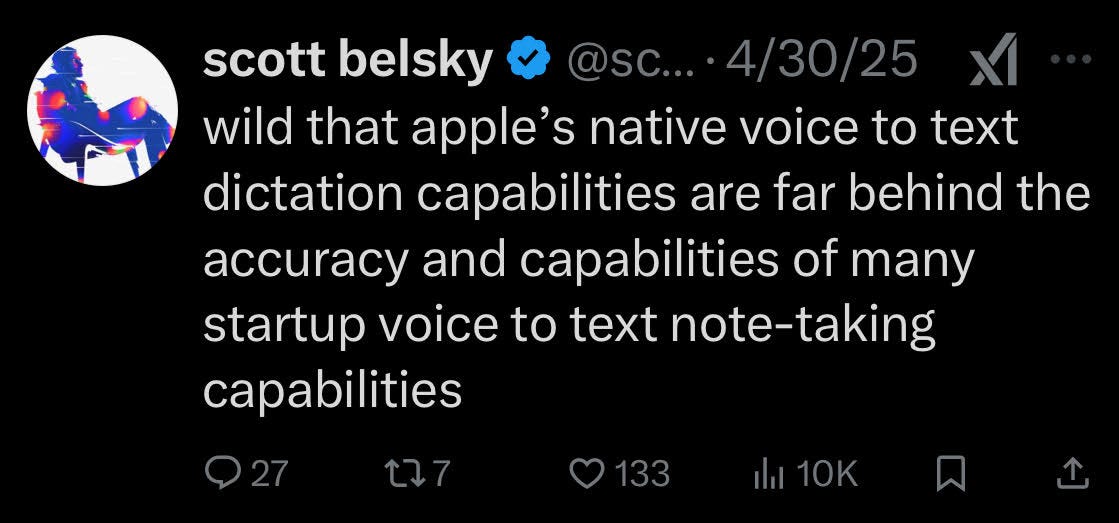Three New Paths in the AI Shift
In two weeks, two of my closest friends got laid off.
One up north in Vancouver, and one in the Bay Area.
Smart as hell, trustworthy, and a joy to work with.
But I guess that doesn't mean anything anymore.
Then an old buddy from Amsterdam slid into my inbox: "Know anyone hiring?"
We used to work at a startup that felt like the future right after the pandemic.
Now it's almost… gone.
Later that week, I grabbed coffee with a DP friend in LA. He hasn't touched a camera in weeks.
Is Hollywood dying?
And… this is all happening before AI has even really arrived. Madness!
Then I flash back to something someone said in a meeting full of filmmakers and writers: "The union will stop it!"
Man… how deep in sleep do you have to be?!!
That’s when I reminded myself: Don’t add to the chaos. Be useful or get out.
OK! Let's start from scratch:
Yes, things are falling apart. This isn't just about job losses or a slow industry cycle. Old systems are collapsing. But as always when you lose something, you also gain something. In every collapse, there's a rare moment: a chance to step out of the line, stop chasing what's safe, and build something different. If you're shifting gears and trying to reposition yourself, grab a coffee and start reading. I've put together three real opportunities for you that are opening right now. Let me break them down.
First: the rise of micro studios
You don't need to be a giant to build something high-quality anymore.
A new kind of studio is rising in film, design, and digital products: small, fast, and AI-native. We've seen agile studios before, but these are different. These are elite crews…deeply talented, wildly efficient and AI lets them scale fast with almost no overhead.
Picture a tiny team going head-to-head with Warner Bros... on a fraction of the budget. Of course, the whole equation scrambles! That's where they win.
Who are they? Teams of 5–10. Remote. Global. Giving chances to talent from the smallest cities in the world.
The founders are amazing storyteller who run on taste, judgment, and rebellion.
They love building. They experiment constantly. New tools, new workflows, new ideas. They move fast. They know how to tell stories for the internet and build direct audiences.
And wit AI, they can hold their ground against giants.
How do they start?
Two paths:
They either put together a pitch deck and raise seed money…
Or take the organic route: a few friends+ one real project + a mix of AI and traditional tools. When the project wraps, they make buzz and let it define the studio.
Second: the rise of the creative producers
I call them creative producers. They're part creative director, part producer. They think big: strategy, taste, direction. But they're also get-it-done animals.
They've been in the rooms where decisions happen… and on the sets, in the labs, in the garages where things actually get made. They lead creatives (which is messy and emotional), manage projects, fix chaos… and still roll up their sleeves and do the work when it matters.
And now? They are adding AI to the mix.
They know how to manage both machines and humans.
They come from film, design, editorial, product, project management.
Companies need these people. Haven't you seen Autodesk's report last month? Nearly half of industry leaders now say AI fluency is a top hiring priority. But here’s the thing: 58% of them can’t find the talent.
And one of the roles they’re hunting for is exactly this: a connector. Someone who can bridge it all: machines, humans, tools, story, workflow, delivery. People who understand how it all fits together.
How do they start?
They dig in… studying workflows, job listings, emerging tools. They go to events. They call five people outside their field and aren't afraid to ask real questions.
Then they connect all the dots and start testing. On a side project. With a small team. With whatever they've got.
And when they spot a real pattern (something that actually solves a problem or brings clear value), they move. They change their title, reposition themselves, and lead.
Third: the rise of the curators
Some of us aren't here to build studios or run teams. We're here to translate the shift. To name it, shape it, and explain it through newsletters, simple visuals, and sharp content. These people turn chaos into clarity.
They don't scale teams. They scale a perspective. Their viewpoint is their business.
If you're more bridge-builder than technician, this might be your path.
You're betting there's value in helping others see. In taking the big, messy, often complex world of tech... and filtering it through curiosity, honesty, and connection. Then making it usable and accessible for the rest. They don't chase hype. They chase signal.
How do they start?
They're truly obsessed with AI and this shift. They want to figure it out for themselves first. So they start eating up everything. They have the stomach of a beast: LinkedIn, talks, research papers, another report. They talk to people across fields. They connect dots others don't see.
They also know how to start small and consistent and learn in public. A thread. A newsletter. Recording themselves on a phone.
That's it.
Of course, reality is messier than this.
And… not everyone fits these paths.
But I'm sure it'll click for some.
PS: Got a few messages saying this post shifted how they see AI.
Glad it resonated :)
More soon.


